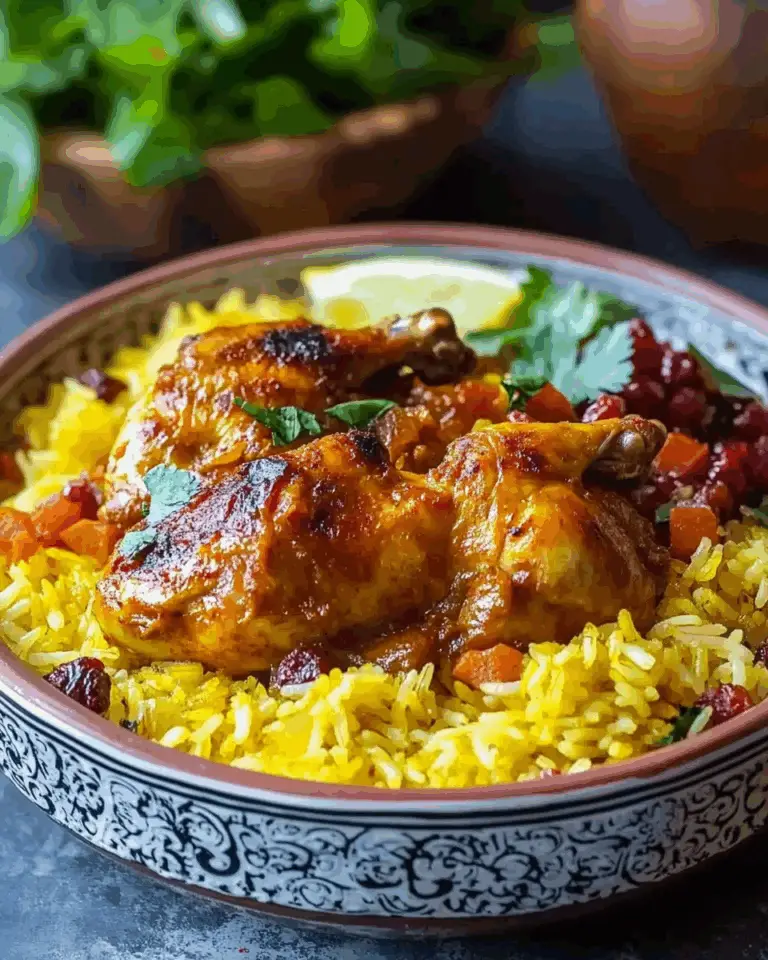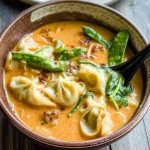The Significance of Saffron in Persian Cooking
Saffron is one of the defining features of Zereshk Polo Ba Morgh and plays an integral role in Persian culinary culture. Often referred to as “red gold,” saffron threads are derived from the crocus flower and are highly prized for their vivid color, subtle floral aroma, and distinctive flavor. In this dish, saffron is delicately bloomed using the traditional Persian method—by grinding the threads and letting them steep in melting ice. This technique maximizes both the flavor and color release, ensuring that every grain of rice it touches is infused with saffron’s luxurious essence.
Saffron doesn’t just contribute color—it adds an ethereal depth that enhances the savory chicken and complements the tartness of the barberries. It’s a symbol of celebration and opulence in Persian culture, used sparingly but with purpose to elevate both the taste and visual appeal of the dish.
Aromatic Chicken Stewed to Perfection
The chicken in Zereshk Polo Ba Morgh is anything but basic. It’s first seared with chopped onions to create a rich base, then simmered in a deeply spiced tomato and saffron broth. The combination of turmeric, cinnamon, nutmeg, cardamom, cumin, and coriander forms a bold yet balanced flavor profile. These spices not only season the chicken but also infuse the cooking liquid, which reduces slowly into a thick, rich sauce that clings to the meat.
This long simmering process ensures that the chicken becomes fall-apart tender, deeply flavorful, and enveloped in a sauce that’s both tangy and savory with a hint of warmth from the spices. Unlike quick-cook recipes, the patience required here pays off in terms of depth, aroma, and texture. The result is a comforting stew-like main dish that pairs exquisitely with the delicately flavored rice.
Barberries: Tiny Jewels of Flavor
Barberries, or zereshk in Persian, are small dried berries with a sharply tangy flavor. These ruby-red gems are what give this dish its signature brightness and visual flair. When briefly sautéed in butter and a touch of sugar, they become plump and glossy, offering bursts of tartness that cut through the richness of the chicken and rice.
In Persian cuisine, the contrast of flavors—sweet and sour, rich and bright—is highly valued. Barberries provide that necessary tang that elevates the entire meal. Their slight chew and intense flavor also add textural interest and a unique taste that is rarely found in other cuisines.
When stirred into the saffron rice, the barberries create a striking golden-and-red mosaic atop the fluffy white rice. It’s a visual and flavor-forward experience that delights from the first glance to the last bite.
The Importance of Rice in Persian Culture
In Iranian cuisine, rice is more than just a side—it’s a central element, often the most revered part of the meal. Preparing rice the Persian way is both an art and a ritual. While this recipe doesn’t include tahdig, the crispy rice layer prized in many Persian dishes, it still honors the tradition of layering flavors and textures through the addition of saffron and barberries.
Using high-quality basmati rice is key. Its long grains, when cooked correctly, remain distinct and fluffy, absorbing flavors without becoming mushy. The saffron water is mixed with a portion of the rice and spooned on top to form a crown of golden hue, enhancing the presentation and offering bursts of flavor with every forkful.
This method of layering rice with saffron and barberries adds both elegance and complexity, making it a meal that’s as special to look at as it is to eat.
A Balancing Act: The Role of Shirazi Salad
No Persian table is complete without a refreshing salad to complement the main dish. Shirazi salad, made with diced cucumbers, tomatoes, and onions, tossed with lemon juice and mint, offers a cool, crisp contrast to the warmth and richness of Zereshk Polo Ba Morgh.
It’s light, simple, and incredibly effective in balancing the meal. The acidity from the lemon juice and the herbal lift from the mint cleanse the palate between bites of the savory chicken and fragrant rice. It also adds hydration and texture, rounding out the dish and making it suitable for both celebratory and everyday meals.
Nutritional and Culinary Balance
This dish is not only delicious but also surprisingly balanced. The chicken provides a high-quality source of protein, while the rice offers sustained energy through carbohydrates. The use of turmeric, saffron, and other spices adds not only flavor but also potential health benefits, including anti-inflammatory properties and digestive support.
Barberries are rich in antioxidants and vitamin C, which contribute to immune health. The optional Shirazi salad introduces raw vegetables and fiber, making this a meal that’s flavorful, satisfying, and nutritionally rounded. By using olive or vegetable oil sparingly and opting for bone-in chicken for more natural flavor, the dish maintains a wholesome character without feeling overly rich or heavy.
Tradition Meets Accessibility
Zereshk Polo Ba Morgh may sound exotic to some, but it’s an incredibly accessible dish for home cooks. While a few of the ingredients—like saffron and barberries—may require a visit to a Middle Eastern or specialty grocery store, they’re increasingly available online and in international markets. Once you’ve sourced the staples, the cooking process is straightforward and highly rewarding.
It’s a wonderful way to introduce yourself or your family to Persian cuisine, offering a full sensory experience with layered flavors, beautiful presentation, and cultural depth. The recipe is also easy to scale, making it perfect for feeding a crowd or enjoying leftovers the next day.
Conclusion
Zereshk Polo Ba Morgh is a shining example of how food can tell a story. Every element of this dish—from the golden saffron-infused rice and jewel-like barberries to the richly seasoned chicken and refreshing Shirazi salad—speaks to the culinary heritage and hospitality of Persian culture. It’s a recipe that manages to be both festive and deeply comforting, suitable for celebrations, family dinners, or moments when you simply want to treat yourself to something special.
With its balance of flavors, colors, and textures, this dish transcends the ordinary and transforms a simple meal into a cultural experience. Once you master it, you’ll understand why it remains a staple in Iranian homes and a favorite among those lucky enough to taste it. Serve it with pride, savor it slowly, and let it transport you to the heart of Persian tradition—one aromatic bite at a time.






